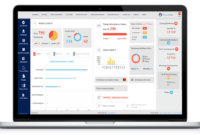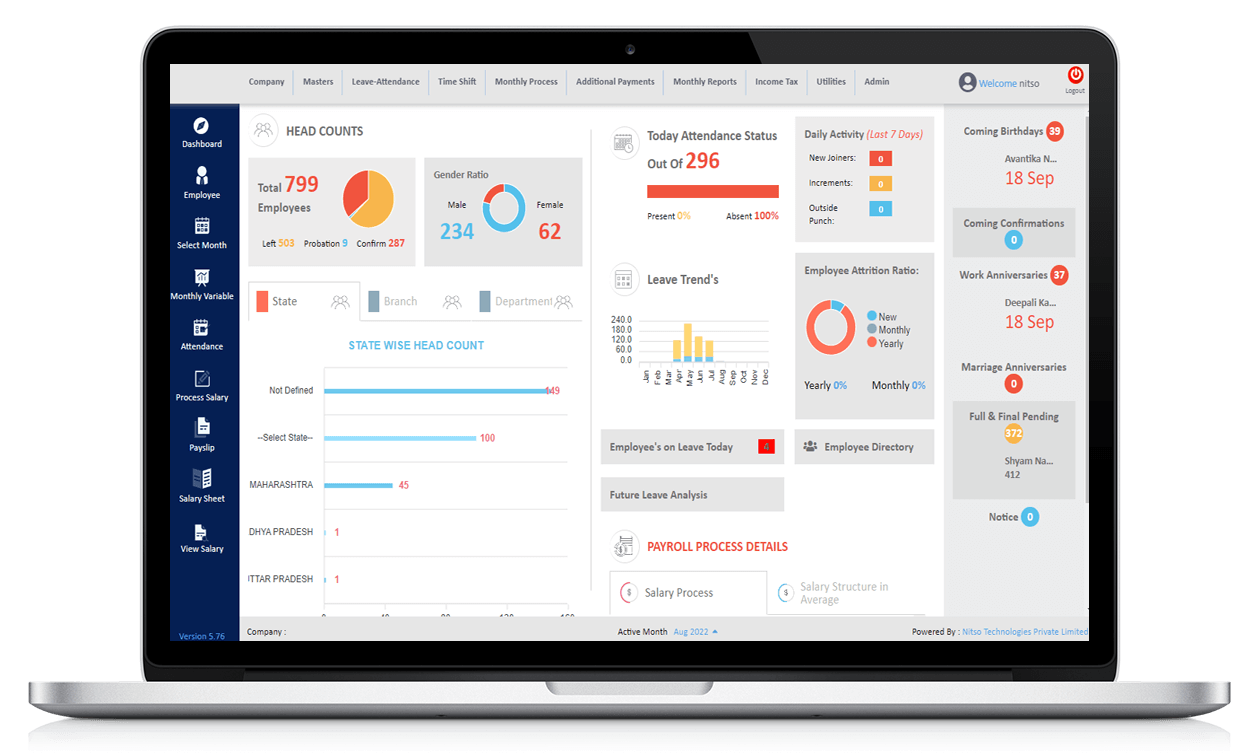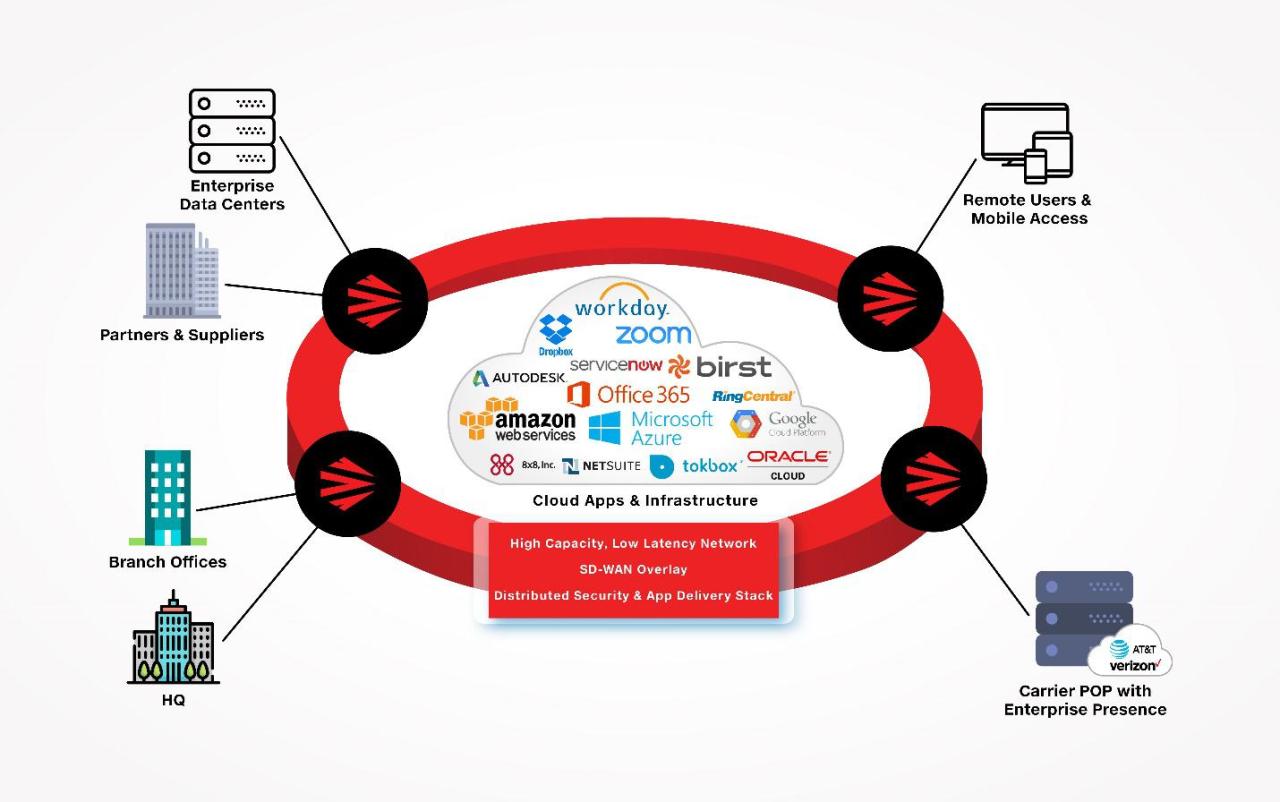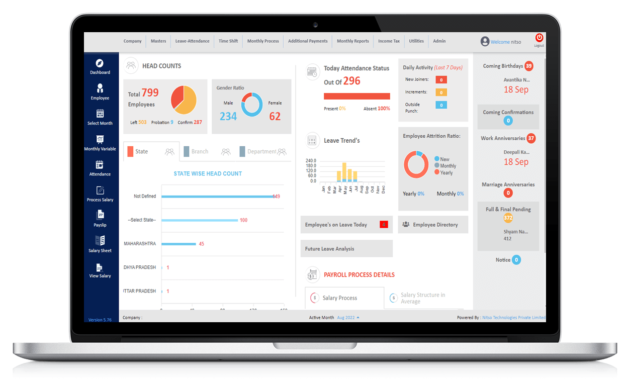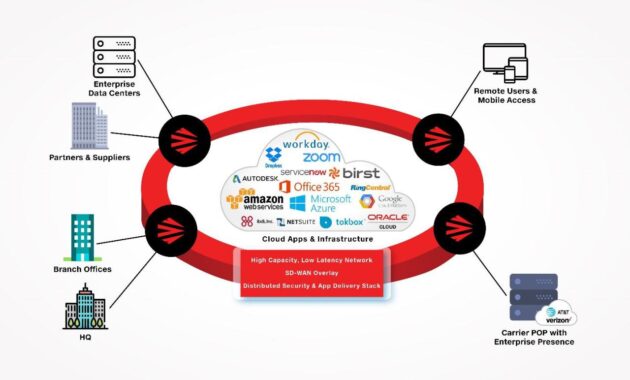Data security in cloud computing serves as a critical cornerstone for organizations navigating the digital landscape. As businesses increasingly rely on cloud services, understanding the nuances of safeguarding sensitive information becomes paramount. This overview aims to illuminate the importance of data security, debunk common misconceptions, and emphasize the role it plays in protecting organizational integrity and customer trust.
Cloud computing offers remarkable flexibility and efficiency, yet it also introduces various security challenges that need to be addressed. From data breaches to compliance requirements, organizations must adopt robust security measures to safeguard their data, ensuring compliance with regulations like GDPR and HIPAA. In this comprehensive discussion, we will explore the types of data threats, encryption techniques, best practices, and future trends that shape the landscape of cloud data security.
Overview of Data Security in Cloud Computing

Data security in cloud computing refers to the various strategies and practices employed to protect data stored in cloud environments. This encompasses safeguarding sensitive information from unauthorized access, breaches, and other cyber threats. As organizations increasingly shift their data and applications to the cloud, understanding and implementing effective data security measures is paramount to maintaining the integrity and confidentiality of their information.The importance of data security for organizations utilizing cloud services cannot be overstated.
With a significant amount of critical data residing in the cloud, businesses must ensure that their information is not only securely stored but also compliant with industry regulations. Data breaches can lead to severe financial penalties, reputational damage, and loss of customer trust. Therefore, companies need to invest in robust security measures to mitigate risks and protect their assets.
Common Misconceptions Regarding Data Security in Cloud Environments
Several misconceptions surround data security in cloud computing that can lead to insufficient protection measures. It is essential to address these misunderstandings to foster a more secure cloud adoption strategy.
- Data is Automatically Secure in the Cloud: Many assume that simply moving data to a cloud service provider guarantees security. However, this is not inherently true; organizations must actively implement security protocols.
- Security is Solely the Provider’s Responsibility: While cloud service providers do offer security measures, the responsibility for data protection is a shared one. Organizations must ensure that they complement provider measures with their own security policies.
- Only Large Enterprises Need Data Security: Small and medium-sized businesses also hold sensitive data that can be targeted by cybercriminals. Every organization, regardless of its size, should prioritize data security.
- Cloud Security is Too Expensive: While there are costs associated with implementing security measures, the potential costs of a data breach far exceed these expenditures. Investing in data security can save organizations from substantial financial losses.
“Assuming data security in the cloud is a set-it-and-forget-it scenario can lead to severe vulnerabilities.”
The landscape of data security in cloud computing is complex, and organizations must navigate this environment with informed strategies and a clear understanding of their security responsibilities. By dispelling common myths, businesses can take proactive steps towards protecting their data assets effectively.
Types of Data Security Threats
In the realm of cloud computing, data security threats are a significant concern for businesses and individuals alike. As more organizations shift their data storage and computing resources to the cloud, understanding the various threats that can compromise data integrity and confidentiality is crucial. Data security threats in cloud environments can take many forms, ranging from external attacks to internal vulnerabilities.
These threats can lead to data breaches, loss of sensitive information, and irreparable damage to an organization’s reputation. It’s essential to identify these threats and understand their implications to safeguard data effectively.
Common Data Security Threats in Cloud Computing
A variety of threats can challenge the security of data stored in cloud environments. Some of the most common include:
- Data Breaches: Unauthorized access to sensitive data can occur due to hacking or security lapses. A notable example is the 2020 Capital One breach, where a misconfigured firewall exposed the personal information of over 100 million customers.
- Data Loss: Data can be lost due to accidental deletion, system failures, or natural disasters. For instance, the 2017 Google Cloud failure led to significant data loss for several users.
- Insider Threats: Employees or contractors can misuse their access privileges to steal or destroy data. The 2019 Boeing insider threat incident resulted in sensitive corporate data being stolen by an employee.
- Insecure APIs: Application interfaces can be a target for attacks if not properly secured. Vulnerabilities in APIs can lead to exposure of sensitive data, as seen in the Uber data breach of 2016, where API weaknesses were exploited.
- Malware and Ransomware Attacks: Malware can infiltrate cloud environments, encrypting or stealing data. The 2021 Colonial Pipeline ransomware attack disrupted operations and demonstrated the crippling effects of such threats.
Recent Data Breaches in Cloud Services
Recent data breaches in cloud services highlight the vulnerabilities present in these environments. One significant incident occurred in 2021 when Microsoft Azure faced a breach due to misconfigured security settings. This breach exposed the data of over 38 million users, showcasing the critical importance of proper configuration and oversight in cloud services. Another notable event was the 2020 FireEye breach, where hackers accessed sensitive government and corporate data stored in the cloud.
These incidents underscore the necessity for robust security measures to protect cloud-stored data against evolving threats.
Comparison of Data Security Threats in Traditional and Cloud Environments
When comparing the risks associated with data security threats in traditional versus cloud environments, several key differences emerge. Traditional environments typically rely on on-premises security measures, whereas cloud environments depend on the security frameworks provided by cloud service providers. The risks in traditional environments often stem from physical security breaches and local network vulnerabilities, while cloud environments face unique challenges, such as multi-tenancy risks and increased exposure to remote attacks.
The flexibility and scalability of cloud computing come with a corresponding rise in security responsibilities and potential threats.
In traditional setups, businesses have more direct control over their data security measures, but they also bear the full burden of maintaining and securing infrastructure. In contrast, while cloud service providers implement robust security frameworks, the shared responsibility model requires organizations to actively engage in securing their data, emphasizing the importance of understanding both environments’ security postures to safeguard against potential threats effectively.
Data Encryption Techniques
Data encryption is a critical component of data security in cloud computing, safeguarding sensitive information against unauthorized access. By transforming readable data into an encoded format, encryption ensures that even if data is intercepted, it remains unreadable without the appropriate decryption key. This section delves into various encryption methods, their application in protecting data both at rest and in transit, along with examples of commonly used encryption tools in cloud services.
Encryption Methods Used in Cloud Computing
Different encryption methods are employed to secure data in the cloud, each offering unique features suited to various security needs.
Symmetric Encryption
This method utilizes a single key for both encryption and decryption. It is efficient and fast but requires secure key management since anyone with the key can decrypt the data. AES (Advanced Encryption Standard) is a widely used symmetric encryption algorithm known for its speed and security.
Asymmetric Encryption
Also known as public-key cryptography, this method involves a pair of keys—one public and one private. The public key encrypts the data, while the private key decrypts it. This method enhances security but is slower than symmetric encryption. RSA (Rivest-Shamir-Adleman) is a popular asymmetric encryption algorithm that facilitates secure data exchange.
Hash Functions
These are used to ensure data integrity rather than confidentiality. A hash function takes an input and produces a fixed-size string of characters, which appears random. Any change in the input will result in a completely different hash. Common hash functions include SHA-256 (Secure Hash Algorithm).
Protection of Data at Rest
Data at rest refers to inactive data stored physically in any digital form (e.g., databases, data warehouses). Encryption plays a vital role in protecting this data, ensuring that unauthorized users cannot access sensitive information even if they gain physical access to the storage devices.
Full Disk Encryption (FDE)
This method encrypts the entire disk drive, making all data on the drive inaccessible without the correct decryption key. Examples include BitLocker for Windows and FileVault for macOS.
Database Encryption
Specific databases offer built-in encryption features that secure sensitive fields or entire tables. For instance, Oracle Transparent Data Encryption (TDE) encrypts database files while still allowing access to the data through standard SQL queries.
“Encrypting data at rest is essential to protect against physical theft and unauthorized access.”
Protection of Data in Transit, Data security in cloud computing
Data in transit refers to data actively moving from one location to another, such as across the internet or through a private network. Encryption ensures that this data remains confidential and intact during transmission.
Transport Layer Security (TLS)
This cryptographic protocol secures data transfers over the internet by encrypting communication between web browsers and servers. It is widely used for HTTPS connections.
Secure Sockets Layer (SSL)
Although largely replaced by TLS, SSL is still recognized as a foundational technology for secure communications on the internet, providing encryption and ensuring data integrity.
“Encryption during data transit prevents interception and unauthorized access while information is being transferred.”
Commonly Used Encryption Tools in Cloud Services
Various encryption tools are integrated into cloud services to enhance data security. These tools help organizations manage encryption keys and provide robust security features.
AWS Key Management Service (KMS)
A managed service that simplifies creating and controlling encryption keys used to encrypt data across AWS services.
Azure Information Protection
This tool helps classify and protect documents and emails by applying encryption and access controls.
Google Cloud Key Management
This service allows users to manage cryptographic keys for their cloud services and control access to sensitive data.By implementing these encryption techniques, organizations can significantly improve their data security posture in cloud computing environments, ensuring both data confidentiality and integrity.
Compliance and Regulatory Standards

In the realm of cloud computing, compliance and regulatory standards play a crucial role in ensuring data security. Organizations that utilize cloud services must navigate a complex landscape of legal obligations to protect sensitive data and maintain consumer trust. Adhering to these standards not only safeguards individual privacy but also strengthens the overall security posture of businesses operating in the cloud.Compliance requirements related to data security in cloud computing encompass various regulations that dictate how organizations must handle, store, and protect personal data.
These standards are shaped by the nature of the data being processed, the location of the organization, and the jurisdictions in which they operate. Some of the most significant regulations include the General Data Protection Regulation (GDPR) in Europe and the Health Insurance Portability and Accountability Act (HIPAA) in the United States, each bringing specific requirements for data handling and protection.
GDPR and HIPAA Regulations
The GDPR establishes strict data protection and privacy standards for individuals within the European Union (EU). It mandates that organizations must obtain explicit consent from individuals to process their personal data, ensuring transparency regarding data usage. The penalties for non-compliance can reach up to €20 million or 4% of the annual global turnover, showcasing the serious implications of failing to meet these standards.
Key aspects include:
- Data Subject Rights: Individuals have the right to access, rectify, and erase their personal data.
- Data Breach Notification: Organizations must report data breaches within 72 hours to the relevant authorities.
- Privacy by Design: Data protection must be integrated into the development of business processes and systems.
On the other hand, HIPAA focuses specifically on the healthcare sector, establishing guidelines to protect sensitive patient information. Covered entities, such as healthcare providers and insurers, are required to implement stringent security measures to safeguard patient data. Important components of HIPAA include:
- Protected Health Information (PHI): Any identifiable health information related to an individual must be kept confidential.
- Security Rule: Requires administrative, physical, and technical safeguards to ensure the confidentiality, integrity, and availability of PHI.
- Breach Notification Rule: Mandates that individuals must be notified of breaches of their health information.
Comparison of Compliance Requirements Across Different Regions
Compliance requirements vary significantly across different regions, reflecting local laws and cultural attitudes towards data privacy. Understanding these differences is essential for businesses operating internationally. Here’s a brief comparison of key regulations from various regions:
| Region | Regulation | Key Requirements |
|---|---|---|
| European Union | GDPR | Explicit consent, data subject rights, breach notifications |
| United States | HIPAA | Confidentiality of PHI, security safeguards, breach notifications |
| Canada | PIPEDA | Consent, transparency, access to personal data |
| Australia | Australian Privacy Principles (APPs) | Data collection limits, security of personal information, cross-border disclosures |
| Brazil | LGPD | Consent, data processing principles, enforcement mechanisms |
The landscape of compliance requirements is dynamic, evolving as technology and societal norms change. Organizations must stay informed about these regulations to ensure they meet legal obligations while fostering trust among clients and stakeholders. Understanding the specific requirements in different regions will help organizations to mitigate risks associated with non-compliance and enhance their data security strategies.
Best Practices for Data Security
In the cloud computing landscape, safeguarding data is paramount. As organizations move their operations and sensitive information to the cloud, implementing robust data security measures becomes a necessity. By adhering to best practices, businesses can effectively mitigate risks and enhance their overall security posture.In this section, we will Artikel essential best practices for ensuring data security in cloud environments. These practices encompass a range of strategies and techniques that organizations can deploy to safeguard their data effectively.
Checklist for Robust Data Security Measures
Creating a checklist for data security can help businesses ensure that they are covering all necessary aspects to protect their cloud environments. The following points highlight key areas to focus on:
- Conduct regular risk assessments to identify vulnerabilities and threats.
- Implement strong authentication measures, such as multi-factor authentication, to enhance access control.
- Encrypt sensitive data both at rest and in transit to protect it from unauthorized access.
- Regularly update and patch software to address known vulnerabilities.
- Utilize advanced firewalls and intrusion detection systems to monitor and secure network traffic.
- Establish strict access controls and permissions to limit data access to authorized personnel only.
- Develop a comprehensive incident response plan to address potential data breaches swiftly.
Role of Employee Training in Maintaining Data Security
Employee training plays a crucial role in maintaining data security within cloud environments. Human error is often cited as a leading cause of data breaches, making it imperative that employees are well-informed about security practices. Effective training programs can significantly reduce the likelihood of security incidents.Organizations should prioritize the following areas in their training initiatives:
- Educate employees about common cyber threats, such as phishing and social engineering attacks.
- Train staff on best practices for password management, including the use of strong passwords and regular updates.
- Provide guidance on recognizing suspicious activity and reporting potential security incidents.
- Emphasize the importance of following established security protocols and policies.
By integrating these best practices and ensuring that employees receive ongoing training, businesses can create a resilient data security framework in their cloud environments. This proactive approach not only protects sensitive information but also fosters a culture of security awareness within the organization.
Incident Response and Management
In the landscape of cloud computing, data security incidents can arise unexpectedly, making effective incident response and management a critical aspect of any organization’s data protection strategy. An incident response plan Artikels procedures for addressing security breaches, minimizing damage, and restoring normal operations. This proactive approach not only safeguards sensitive information but also helps maintain customer trust and compliance with regulatory standards.An effective incident response involves several key steps that Artikel how organizations should react when a data breach occurs.
These steps are designed to ensure that the incident is managed swiftly and efficiently, reducing potential impacts on the organization and its stakeholders.
Steps Involved in Incident Response for Cloud Data Security Breaches
The incident response process typically follows a structured plan that can be broken down into the following stages:
1. Preparation
Establishing an incident response team and developing an incident response plan that includes identification of critical assets and potential threats.
2. Identification
Detecting and confirming the occurrence of a security incident through monitoring tools and user reports.
3. Containment
Implementing immediate measures to contain the incident and prevent further damage. This might include isolating affected systems or services.
4. Eradication
Identifying the root cause of the breach and removing any malicious elements or vulnerabilities that contributed to the incident.
5. Recovery
Restoring affected systems to normal operation while ensuring that vulnerabilities have been addressed to prevent future incidents.
6. Lessons Learned
Analyzing the incident to understand what went wrong, what was effective in the response, and how processes can be improved in the future.The importance of having a well-defined incident response plan cannot be overstated. It serves as a roadmap for organizations to follow during a crisis, ensuring that all team members know their roles and responsibilities. Without this plan, responses can be chaotic, leading to inconsistent actions, increased damage, and potential legal ramifications.
Roles and Responsibilities During a Data Breach Incident
Clearly defined roles and responsibilities are essential during an incident response to ensure that every aspect of the breach is managed effectively. The following table Artikels typical roles and their associated responsibilities during a data breach incident:
| Role | Responsibilities |
|---|---|
| Incident Response Team Lead | Coordinates the overall response effort, communicates with senior management, and oversees all incident response activities. |
| IT Security Analyst | Identifies and assesses the nature of the breach, conducts forensic analysis, and implements containment measures. |
| Communications Officer | Manages internal and external communications, including notifying affected parties and ensuring compliance with reporting regulations. |
| Legal Advisor | Provides guidance on legal implications, regulatory requirements, and communications strategy during the incident response. |
| Business Continuity Manager | Ensures that business operations can continue or quickly resume while managing the impact of the incident. |
By establishing a clear structure for roles and responsibilities, organizations can enhance their readiness to respond to incidents and facilitate a more effective recovery process. The emphasis on preparation, rapid response, and ongoing improvement is vital in the ever-evolving landscape of cloud data security.
Future Trends in Cloud Data Security
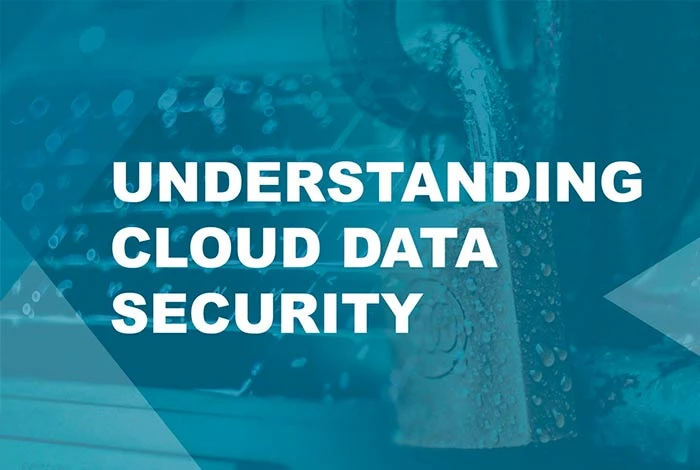
As organizations increasingly rely on cloud computing, data security emerges as a vital concern. The future of cloud data security is shaped by rapid technological advancements and evolving cyber threats. Keeping data safe in the cloud is not just about compliance; it’s about actively leveraging new technologies to protect sensitive information from unauthorized access and breaches.Emerging trends and technologies in cloud data security are essential for staying ahead of potential threats.
Companies will need to adapt to these trends while also facing challenges that come with them. Understanding these innovations will help organizations bolster their security posture and protect their critical assets.
Emerging Trends and Technologies
Innovations in cloud data security are reshaping how organizations protect their data. Key trends include:
- Zero Trust Architecture: The principle of “never trust, always verify” is leading organizations to implement strict access controls, ensuring that no user or device is inherently trusted.
- Artificial Intelligence and Machine Learning: AI and ML are being used to detect anomalies, predict potential threats, and automate responses, thereby enhancing real-time security analysis.
- Extended Detection and Response (XDR): XDR integrates security data across multiple layers (network, endpoints, server, and email) for a comprehensive view of threats, allowing for quicker responses to incidents.
- Homomorphic Encryption: This innovative encryption method allows data to be processed without being decrypted, ensuring sensitive information remains secure even during analysis.
- Secure Access Service Edge (SASE): SASE combines network security and wide-area networking into a single cloud service, enabling remote users to connect securely to cloud applications from any location.
Potential Challenges for Organizations
As organizations embrace these advancements in cloud data security, they will likely encounter several challenges:
- Skill Gaps: There is a growing need for professionals skilled in the latest security technologies, which can be difficult to find.
- Complexity of Solutions: The integration of multiple security solutions can lead to complexity, making it harder to manage and monitor effectively.
- Regulatory Compliance: Keeping up with ever-changing regulations can be challenging, especially across different regions and industries.
- Cost of Implementation: Investing in cutting-edge security technologies can be expensive, particularly for small and medium-sized businesses.
Innovations Shaping the Future
Several innovations are poised to significantly impact the future landscape of cloud data security. These include:
- Quantum Cryptography: Utilizing the principles of quantum mechanics, this technology offers potentially unbreakable encryption methods.
- Blockchain Technology: By providing a decentralized and tamper-proof ledger, blockchain enhances data integrity and security in cloud environments.
- Privacy-Enhancing Computation: Techniques like secure multiparty computation enable data sharing and processing without exposing the actual data.
- Decentralized Identity Solutions: This innovation aims to give users control over their identities and how their data is shared, reducing the risks associated with centralized databases.
- Advanced Threat Intelligence: Real-time threat intelligence platforms will allow organizations to proactively defend against emerging threats by sharing insights and attack patterns across industries.
Answers to Common Questions
What are the most common data security threats in cloud computing?
Common threats include data breaches, unauthorized access, insider threats, and data loss due to outages or disasters.
How does data encryption work in cloud computing?
Data encryption transforms data into a secure format that can only be decrypted by those with the appropriate key, protecting data both at rest and in transit.
Why is compliance important for cloud data security?
Compliance ensures that organizations meet legal and regulatory requirements, which helps protect sensitive data and avoid costly penalties.
What role does employee training play in data security?
Employee training raises awareness about security risks and best practices, reducing the likelihood of human error that could lead to security breaches.
How can organizations prepare for a data breach?
Organizations can prepare by developing an incident response plan, conducting regular security audits, and training employees on breach protocols.

